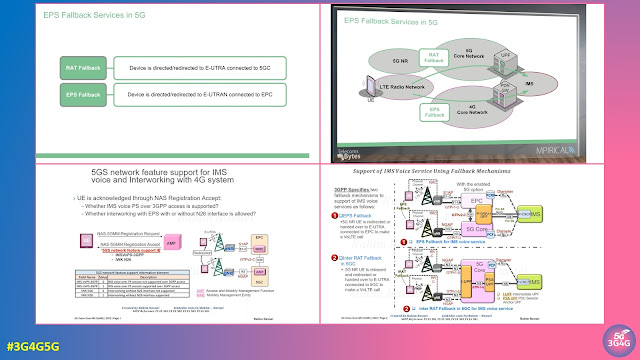Point to point microwave radio systems have been with us for more than eighty years, yet they rarely attract much attention in an era where fibre dominates network planning and satellite systems continue to develop at pace. At a recent IET Anglian Coastal Local Network event, Prof. Andy Sutton delivered an excellent lecture that brought these fixed radio links back into the spotlight. His talk explored the history, engineering and future of microwave and millimetre wave links, reminding us why they remain essential for transmission networks in the UK and around the world.
The story begins with the national microwave radio network of the 1970s, with the BT Tower at its centre. These early deployments supported long links across the country and laid the foundation for many of the design principles still used today. While the landscape has changed significantly, the fundamentals of fixed radio communication continue to be shaped by spectrum availability, propagation characteristics and careful engineering.
Microwave links depend on a wide range of bands, from the lower 6 GHz region through to 80 GHz E-band. The choice of frequency affects everything from link length to susceptibility to atmospheric absorption. As Andy explained, a link designer must consider not just free space path loss, but also Fresnel zone clearance, rainfall intensity and antenna characteristics. The slides included a worked example that showed the impact of frequency and distance on the radius of the Fresnel zone and highlighted the need for adequate clearance to maintain availability over time.
The talk moved on to modern access radio systems, where compact rooftop nodes and all-outdoor radios have become common. These systems rely on careful use of vertical and horizontal polarisations, often enabled through XPIC technology. XPIC allows separate data streams to coexist on the same frequency using orthogonal polarisations, effectively doubling link capacity when conditions allow. This is paired with adaptive coding and modulation, which enables the radio to shift modulation schemes according to link quality. The result is a more resilient and efficient link compared to older fixed-modulation systems.
Capacity planning is a balancing act that involves radio channel bandwidth, modulation choice and the number of aggregated carriers. Wider channels and higher order modulation support multi-gigabit throughput, although this introduces penalties in transmit power and receiver sensitivity. The trade-offs are central to radio design and determine the type of equipment used, whether through a separate indoor and outdoor unit or an integrated all-outdoor system.
Andy also covered the practical elements of radio link planning, such as antenna selection, path profiling, waveguide losses and typical link budget calculations. A link planning example using a 32 GHz radio demonstrated the relationship between transmit power, antenna gain, free space loss and fade margin for a target availability of 99.99 percent. The discussion tied together the theoretical foundations with real-world engineering and illustrated how access radios are designed for street-level backhaul scenarios.
The lecture then moved to millimetre wave systems, particularly E-band radios that operate around 70 and 80 GHz. These links offer enormous capacity over shorter distances and are increasingly used for dense urban backhaul and enterprise connectivity. The slides included examples of network topologies showing how microwave and fibre can be combined to meet different deployment objectives.
A substantial part of the presentation focused on trunk or core microwave radio systems. These high-capacity, high-availability links support long distances and historically formed the backbone of national networks. Although demand for trunk links has reduced as fibre has spread, they still exist in challenging environments. In the UK, many trunk links remain operational in Scotland and island regions where terrain and geography limit fibre deployment. The lecture covered branching networks, duplexers, waveguide installations and space diversity techniques, all of which contribute to the reliability of long-haul links.
Looking ahead, research continues into new frequency bands, wider channels, higher modulation schemes and improved radio hardware. These advances will support even greater capacities, with millimetre wave links expected to reach 100 Gbps over short distances. Microwave radio may no longer be the headline technology it once was, but the field continues to push boundaries and remains an essential part of modern communication networks.
Andy’s lecture was a comprehensive tour of the past, present and future of point to point microwave systems. For anyone working in transmission, mobile networks or wireless engineering, it served as a valuable reminder of the depth of innovation in this area and its continued relevance in the broader ecosystem.
If you would like to explore the material in more detail, the slides from the event are available here and the video can be seen here. Both are well worth a look.
Related Posts:
- Connectivity Technology Blog - 5G Demystified; the What, When and Where by Prof. Andy Sutton, BT
- The 3G4G Blog - Prof. Andy Sutton: Backhauling the 5G Experience - Jan 2020
- The 3G4G Blog - Prof. Andy Sutton: 5G Radio Access Network Architecture Evolution - Jan 2019
- The 3G4G Blog: 5G Network Architecture, Design and Optimisation - Jan 2018
- The 3G4G Blog: 5G Network Architecture and Design Update - Jan 2017
- The 3G4G Blog - CWHeritage Talk: The History of Synchronization in Digital Cellular Networks
























